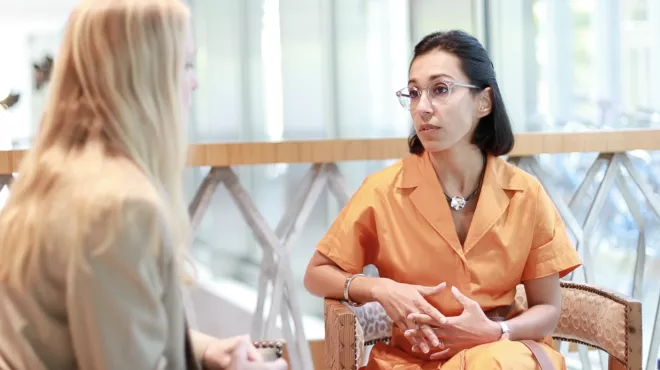Dimitris Agrafiotis describes himself as addicted to innovation. He got his start as a chemist, but computer technology played to his natural strengths – and one particular weakness.
“I have a bad memory,” he says.
Growing up, Agrafiotis – now Chief Information Officer (CIO) of the Novartis Institutes for BioMedical Research (NIBR) – wasn’t particularly good at memorizing facts, but he had an active imagination. He found computer science appealing because it uses relatively few foundational rules but offers limitless possibilities for an imaginative mind.

“Computer science is all about creativity,” he says. “So I got hooked.”
During his postdoctoral fellowship at Harvard University in Cambridge, Massachusetts, in the US, he used expert systems and the 1990s version of artificial intelligence to synthesize complex molecules from simple starting materials. Later, he developed computational methods for computer-aided drug design and found new ways to mine vast chemical libraries and large repositories of chemical, biological and clinical data. Over the years, he’s authored 100 publications and co-invented 18 issued patents.
Agrafiotis continues to combine his passion for computer science with chemistry, drug design and clinical development in his new role as CIO at NIBR, the research arm of Novartis. His forte is building software tools that not only solve challenging scientific or operational problems, but also cater to users – be they chemists, biologists, physicians, data scientists or business associates. His highest priority is to bring data to life through seamless user experiences.
In the course of his career, Agrafiotis has served in many leadership roles in the pharmaceutical industry, most recently as chief data officer and head of technology products at Covance. Here he describes his vision for the future of IT innovation in drug discovery at Novartis.
When it comes to building computational tools, what is important to you?
I appreciate usability and elegance. The ancient architect Vitruvius distilled the essential elements of any standing structure down to strength, function and beauty. These are also the hallmarks of great software. I try to build systems that are powerful, functional and stunningly beautiful.
Computer science is all about creativity. So I got hooked.
Dimitris Agrafiotis
Novartis is becoming a medicines company powered by data and digital. How can you advance this transformation?
By creating computational tools that allow us to use data to answer complex scientific questions. Think of the back-end processing that allows a mobile map app to pinpoint your location and optimize your route in real time. The amount of computing and data science required to enable this capability is astounding.
Yet the beauty of the technology lies in its simplicity. Consider the way users interact with it. You just ask the app to take you home. A similar model – deep, rich data fronted by an elegant and simple-to-use interface – can also enable scientific discovery.
Can you provide an example?
We are expending considerable effort to bring all our research, preclinical data and clinical data into a unified repository and to provide intuitive analytical tools that make it broadly accessible to our scientists.
What will they do with it? Identify new targets to go after, zoom in on promising leads faster, find out which diseases a compound could work best for, and more. Our focus is on making data consumable by both machines and humans, and creating a frictionless user experience that shortens the path from insight to action.
Technology is constantly changing. How do you build in the flexibility needed to accommodate evolving technologies in R&D?
With a comprehensive IT and data strategy that’s in sync with research. The pace of change in this industry is astonishing, and we can’t afford to engineer and implement systems that will be obsolete upon delivery. We must be agile and anticipate changes in our approaches to drug discovery. Our solutions must be flexible enough to fit the evolving needs of our scientists, yet fit for purpose and tailored to the problems they’re designed to solve.
The trick to success is being able to read between the lines. Sometimes scientists can’t easily tell you what they’re looking for. You have to take vague requests and morph them into elegant, workable products. To do that, you need people with strong backgrounds in life sciences, software engineering and data science, a lot of creativity, and – above all – a genuine empathy for the person on the other side of the computer screen.
What are your goals for the future?
The mission of our team is to unleash the power of data and digital technologies to accelerate the discovery and development of breakthrough therapies that improve and extend people's lives. In the near term, we plan to address NIBR’s most pressing needs and bring a data-, user- and value-centric mindset to everything we do.
Ultimately, our vision is to become the most impactful, most efficient and most admired information science and technology organization this industry has ever seen. We can only achieve this by continuing to attract exceptional people into our organization and keeping them excited, motivated and inspired.
Dimitris Agrafiotis discusses his new role as CIO of the Novartis Institutes for BioMedical Research. #innovation #datascience



